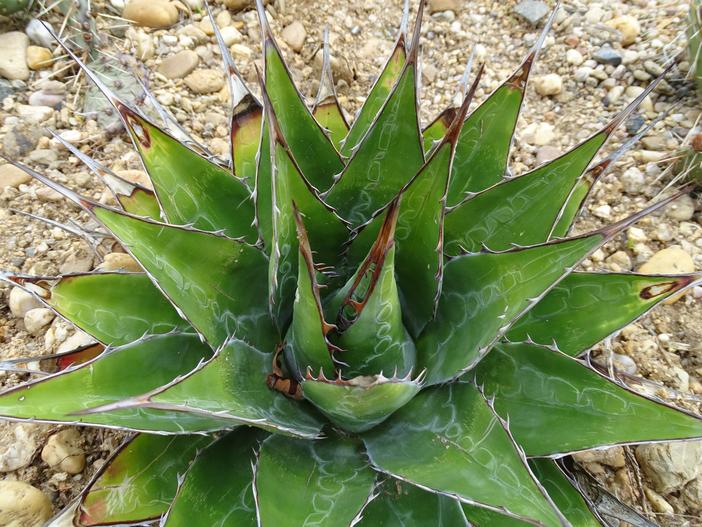Mountain Agave
(Agave montana)
Mountain Agave (Agave montana)
/
/

Richtr Jan
CC BY-SA 4.0
Image By:
Richtr Jan
Recorded By:
Copyright:
CC BY-SA 4.0
Copyright Notice:
Photo by: Richtr Jan | License Type: CC BY-SA 4.0 | License URL: https://creativecommons.org/licenses/by-sa/4.0 | Uploader: Richtr Jan | Publisher: Wikipedia Commons




















Estimated Native Range
Summary
Agave montana, commonly known as Mountain Agave, is an evergreen succulent native to the high-altitude, pine-oak forests in the mountains of Northeastern Mexico. It typically grows to a height and width of 3-4 feet (0.9-1.2 meters). This plant forms a large, solitary rosette of thick, leathery, dark green leaves with white markings and strong terminal spines. The leaves can have a slight reddish tinge when exposed to full sun and cold temperatures. Mountain Agave is particularly noted for its striking appearance when it blooms; it produces a tall, branched inflorescence with bright yellow flowers that can reach up to 10 feet (3 meters) in height, usually after many years of growth. The flowering event is dramatic but also signals the end of the plant’s life cycle, as it is monocarpic and dies after blooming.
Mountain Agave is valued for its architectural form and is often used as a focal point in xeriscapes, rock gardens, and desert-themed landscapes. Its ability to withstand cold temperatures makes it a suitable choice for higher elevation gardens or regions with cooler climates. It requires minimal maintenance, being drought-tolerant and needing very little water once established. It thrives in well-draining soils and prefers full sun exposure to develop its best form and coloration. While generally disease-free, it can be susceptible to root rot if overwatered or planted in poorly draining soils. It is also important to note that the sharp spines can be a hazard, so it should be placed where it will not pose a risk to passersby.CC BY-SA 4.0
Mountain Agave is valued for its architectural form and is often used as a focal point in xeriscapes, rock gardens, and desert-themed landscapes. Its ability to withstand cold temperatures makes it a suitable choice for higher elevation gardens or regions with cooler climates. It requires minimal maintenance, being drought-tolerant and needing very little water once established. It thrives in well-draining soils and prefers full sun exposure to develop its best form and coloration. While generally disease-free, it can be susceptible to root rot if overwatered or planted in poorly draining soils. It is also important to note that the sharp spines can be a hazard, so it should be placed where it will not pose a risk to passersby.CC BY-SA 4.0
Plant Description
- Plant Type: Succulent
- Height: 3-4 feet
- Width: 3-4 feet
- Growth Rate: Moderate
- Flower Color: Yellow
- Flowering Season: Summer
- Leaf Retention: Evergreen
Growth Requirements
- Sun: Full Sun
- Water: Very Low, Low
- Drainage: Fast
Common Uses
Bee Garden, Bird Garden, Drought Tolerant, Fire Resistant, Hummingbird Garden, Low Maintenance, Rabbit Resistant, Rock Garden, Street Planting
Natural Habitat
High-altitude, pine-oak forests in the mountains of Northeastern Mexico
Other Names
Common Names:
Scientific Names: , Agave montana,
GBIF Accepted Name: Agave montana Villarreal